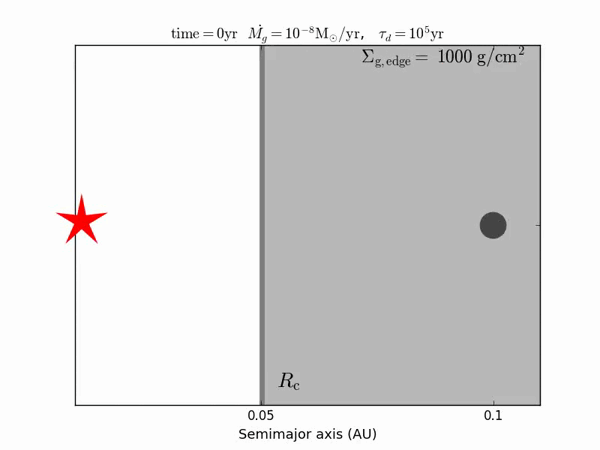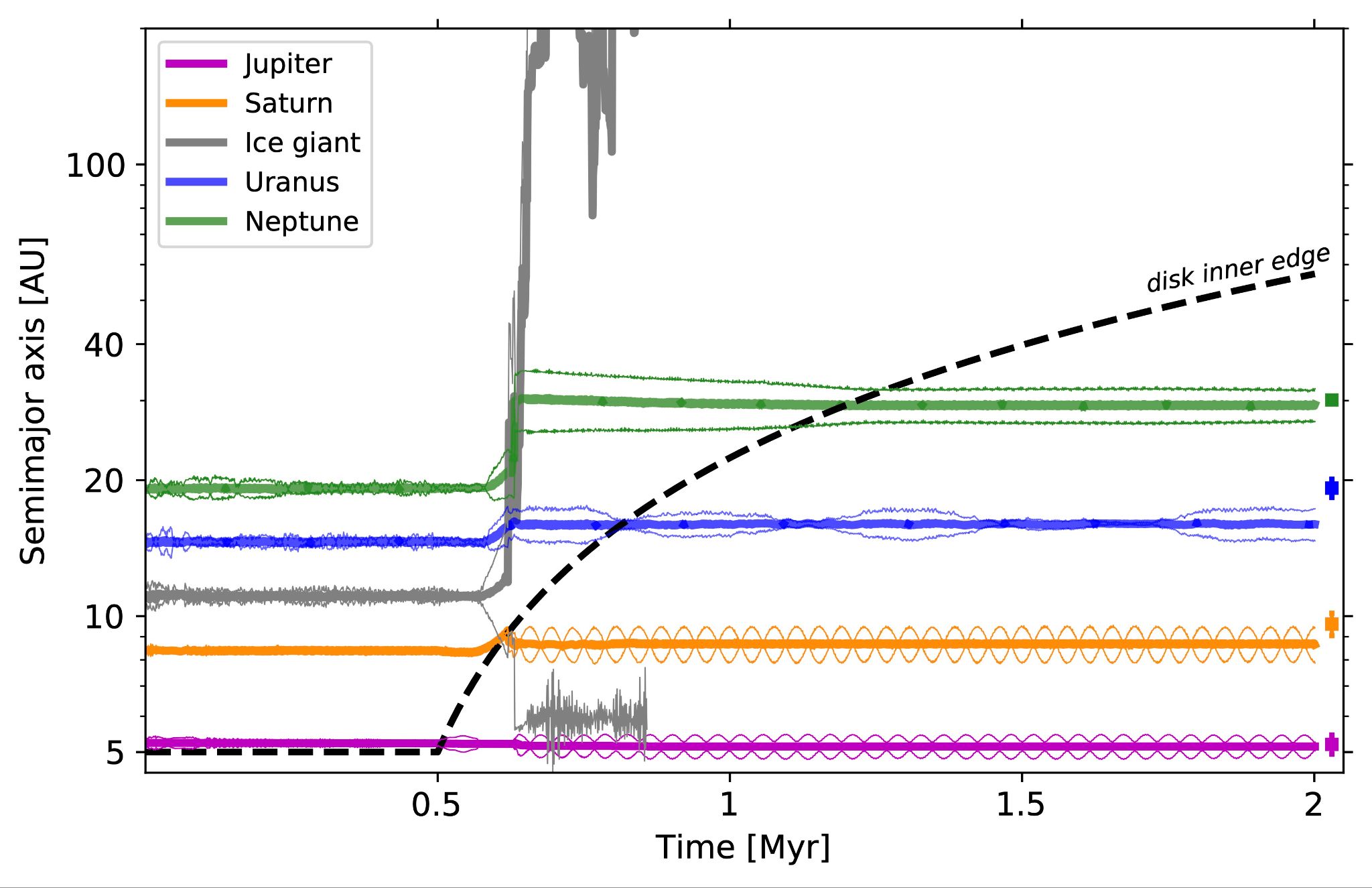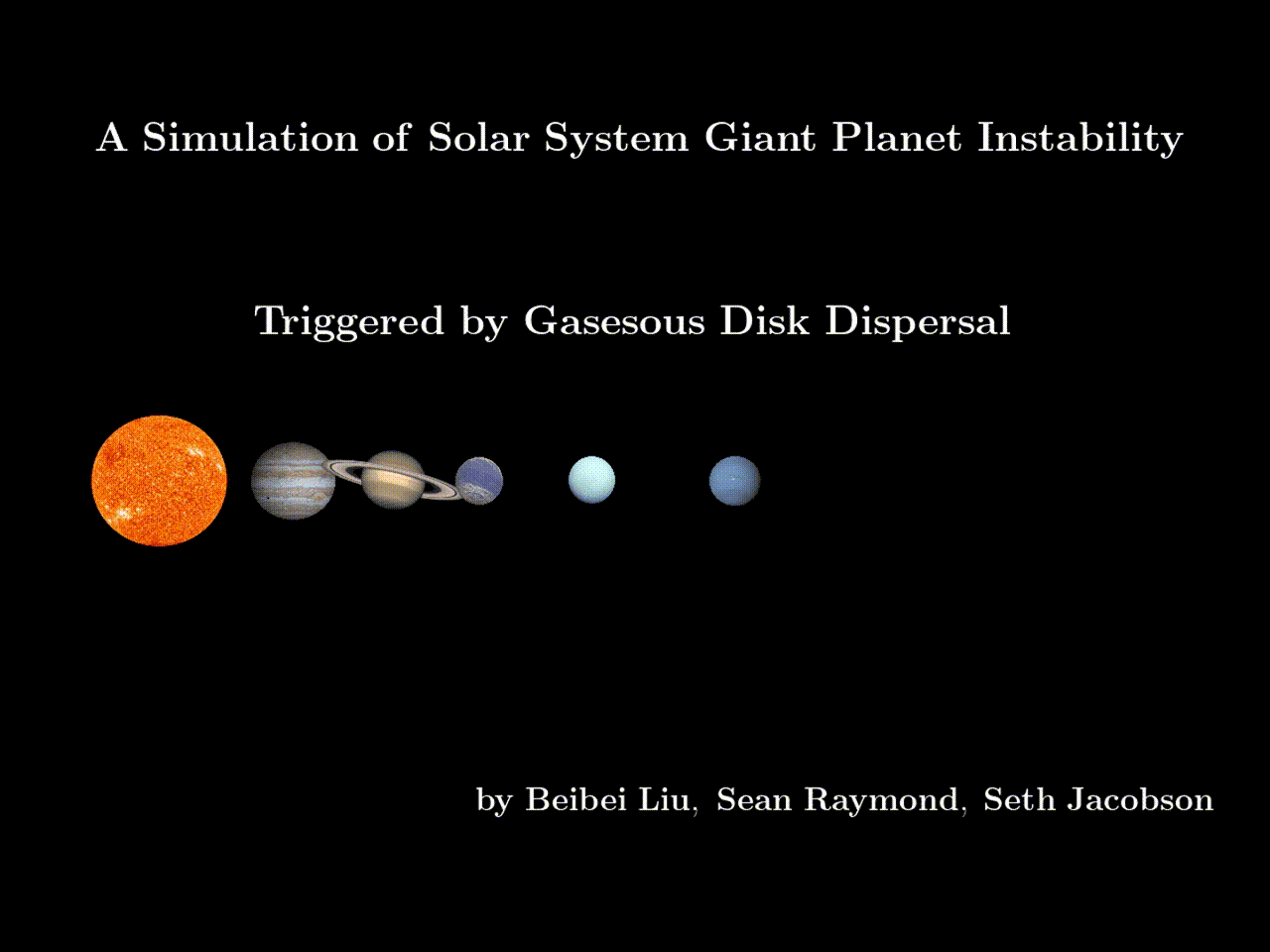How did our solar system giant planets assemble their orbits? Hydrodynamical simulations have shown that while the Sun's gaseous protoplanetary disk was present, the giant planets migrated into a compact orbital configuration in a chain of resonances. However, the current orbits of these giant planets are wider, and not in resonance. How to establish their orbits is a key question in solar system formation. As the earlier Nice model has shown, the giant planet orbital structure is sculpted by an episode of dynamical instability among the giant planets. However, the instability trigger and timing have not been clearly established.
In this study, we try to seek a physical mechanism that sets the final architecture of the giant planets. We conduct more than 10,000 dynamical N-body simulations, and show that the giant planets' instability can be triggered by the dispersal of the gaseous disk via stellar high energy radiation evaporating.
As the disk evaporated from the inside out, its inner edge swept successively across and dynamically perturbed each planet's orbit. The associated orbital shift caused a dynamical compression of the exterior part of the system, ultimately triggering instability. The final orbits of our simulated systems match those of the Solar System for a viable range of astrophysical parameters. The giant planet instability therefore took place as the gaseous disk dissipated, constrained by astronomical observations to be a few to ten million years after the birth of the Solar System. Terrestrial planet formation would not complete until after such an early giant planet instability; the growing terrestrial planets may even have been sculpted by its perturbations, explaining the small mass of Mars relative to Earth.. See details for Liu et al. 2022, Nature [ADS] [arxiv].

Fig.1: animation about a single planet rebound migration with a expanding inner magnetospheric cavity .

Fig.2: solar system giant planet migration during the dispersal of protoplanetary disk driven by stellar photoevaporation.
Figure 1 is an animation that shows a planet reverses its migration direction along the expanding inner disk edge truncated by stellar magneto-disk interaction. We term this first inward then outward migration "rebound". This mechansim was firtly applied to explain the non-resonant orbits of super-Earths discovered by the Kepler mission.
Figure 2 illustrates the migration of solar system giant planets during the gas disk dispersal caused by stellar photoevaporation. An inner hole is opened at a few au orbital distance first, then the inner disk edge moves from inside out. As the cavity sweeps across the giant planet orbits, they could reverse their migration direction, the specific condition of which depends on the planet mass and disk properties. This process eventually triggers large-scale scatterings with one planet ejected from the system. The final orbits of the remaining four planet resemble their current values.

Fig.3: animation version of Fig.2.